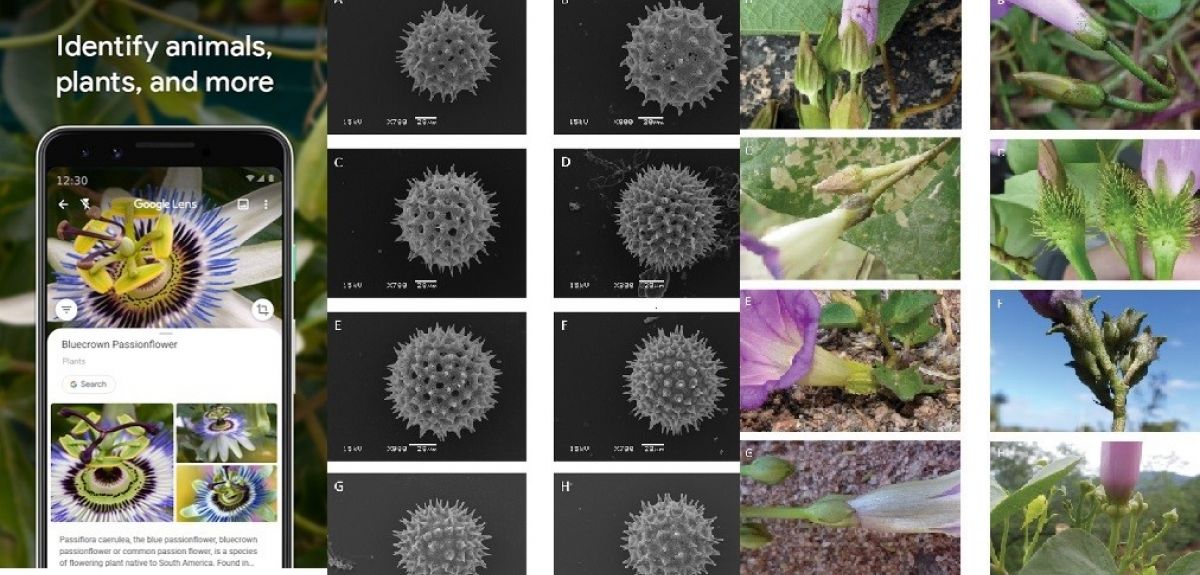Features
The COVID-19 pandemic has increased public awareness of the extent to which society - from farms to care homes - relies on the availability of a low-wage workforce.
The COVID-19 pandemic has increased public awareness of the extent to which society - from farms to care homes - relies on the availability of a low-wage workforce
Media coverage during the coronavirus crisis has, in many cases, highlighted the risks to which these workers are exposed, alongside the low pay and difficult working conditions they endure (such as lack of personal protective equipment). In recent months, delivery drivers, food producers, and supermarket staff have been recognised as ‘key’ workers. Many of those lower-waged occupations, which have been acknowledged as essential in the crisis, are heavily dependent on migrant workers.
Many of those lower-waged occupations, which have been acknowledged as essential in the crisis, are heavily dependent on migrant workers
In this context, it is important to ask if, and how, future immigration policies should take account of the lessons from the COVID-19 pandemic? This question is important for countries around the world but, at the moment, it is particularly relevant for the UK.
The COVID-19 emergency comes at a time when the UK is on the verge of shifting to a new immigration system, when the Brexit transition period comes to an end.
The selection process of immigration systems and essential workers
Immigration systems in high-income countries are typically more open towards workers in higher-paid jobs, while imposing restrictions on those coming to work in lower-paid occupations.
For example, work visas for high-skilled jobs are less likely to be restricted by numerical caps and requirements to look locally first for workers. They will often have a path to permanent residence and citizenship. By contrast, employers recruiting migrant workers in low-skilled jobs will face more complex bureaucracy, such as detailed regulations on pay and working conditions. There may be a maximum stay and no path to permanent status. So, in many cases, immigration into ‘essential’ but low-pay jobs is strongly restricted.
In many cases, immigration into ‘essential’, but low-pay jobs, is strongly restricted
Currently, the UK imposes strong restrictions on immigration for work purposes from outside the European Union, while EU nationals enjoy free movement for work purposes. As a consequence, during the pandemic, EU nationals have played major roles in ‘essential’ low wage sectors of the economy. For example, a large majority of seasonal harvest workers in the UK come from the EU. This workforce is essential, since significant labour shortages in the sector could threaten the UK food supply.
However, free movement will soon end and the UK Government is proposing to restrict substantially the immigration of EU nationals into jobs that are not considered high-skilled.
How would this affect the supply of essential workers in the UK?
Many essential workers from the EU, including NHS nurses and doctors, are likely to be eligible for visas under the proposed immigration system. Obviously, there is a question of whether as many would still be interested in living in the UK, given the different immigration status conditions. We will soon find out. But many other essential workers from the EU, such as those in social care or food manufacturing, are less likely to qualify for a visa.
Many essential workers from the EU, including NHS nurses and doctors, are likely to be eligible for visas under the proposed immigration system...But many other essential workers from the EU, such as those in social care or food manufacturing, are less likely to qualify for a visa
Estimates vary of the share of current workers in essential occupations who do not meet the proposed post-Brexit visa requirements. The discrepancy comes, in part, because there is no unique definition of an ‘essential’ worker.
In a recent paper, I wrote with colleagues Madeleine Sumption and Marina Fernandez-Reino, we find that 53% of EU-born and 42% of non-EU-born full-time employees, in essential occupations in the UK, do not meet the proposed requirements for a work visa. The Migration Observatory updated these numbers using a slightly different definition provided by the UK’s Office for National Statistics and found similar shares: 58% for EU-born and 49% for non-EU-born workers.
Will the pandemic change UK policymakers’ views about how essential workers should be treated in the post-Brexit immigration system?
The current pandemic might convince some policymakers that some industries have strategic value and need special access to a sufficient workforce - so they are in a position to provide essential goods and services in case of a new pandemic or a second wave.
The current pandemic might convince some policymakers that some industries have strategic value and need special access to a sufficient workforce - so they are in a position to provide essential goods and services in case of a new pandemic or a second wave
This could see support for that rationale in post-Brexit immigration policy planning. But the current pandemic provides little guidance on more fine-grained questions, such as which industries should be considered ‘strategic’, in terms of the immigration system.
Others might point out that the current emergency has led to worker lay-offs in other industries – so there is more potential than usual to hire within the domestic labour market. But, while this sounds like a straightforward solution, in the past, even in periods of high domestic unemployment, many employers have still preferred to recruit from abroad. The reasons behind those preferences are complex, but there is evidence that migrants are particularly targeted for jobs that are riskier or require greater physical intensity.
Deciding between these, and other options, is not straightforward and involves a major degree of subjectivity. Expect much more debate on these issues over the next few months.
Carlos Vargas-Silva, Director and Associate Professor, Centre on Migration, Policy and Society (COMPAS), University of Oxford
A collaboration between Oxford scientists and a distillery has produced a special gin called Physic Gin. Based on 25 ingredients found in the Oxford Botanic Garden, the history of this new spirit stretches back 400 years to the garden’s creation in 1621. With this week’s reopening of the Oxford Botanic Garden following months of closure during lockdown, it would seem there are several reasons to raise a glass.
Oxford Sparks’ caught up with Professor Simon Hiscock, Director of the Oxford Botanic Garden for their latest podcast. He tells Sparks how he came up with the idea for Physic Gin from the moment he started in his new role. He says: ‘I wanted to commission a gin because of the great botanicals we have here and the history of the garden.
The intention was for it to grow herbal, medicinal plants, that would then be used in the teaching of herbal medicine for the medical students of Oxford. Gin was also a medicine in its own right, created in the 17th century in Holland and Belgium, for the treatment of fever.
‘The garden was founded in 1621 by Henry Danvers, 1st Earl of Danby, but it wasn’t planted up until the 1640s. Jacob Bobart, the garden’s first director, was an excellent gardener and also ran The Greyhound Tavern just across the road from the Botanic Garden. He started planting the garden and by 1648 he had about 1600 plants here and he made a list – a Catalogus Plantarum – almost like a field notebook, and this little notebook is the inspiration for Physic Gin. Among those 1600 plants are many botanicals that we would use to flavour gin today and importantly juniper because juniper is the base fruit ingredient for flavouring the alcohol.’
The name Physic Gin derives from the fact that the garden was founded originally as a physic garden; a medicinal garden, as Simon explains: ‘The intention was for it to grow herbal, medicinal plants, that would then be used in the teaching of herbal medicine for the medical students of Oxford. Gin was also a medicine in its own right, created in the 17th century in Holland and Belgium, for the treatment of fever.’
After chatting to his local pub landlord about the idea, Simon was put in touch with The Oxford Artisan Distillery, and the collaborative mixing of spirits and minds began.
 Dried chamomile flowers
Dried chamomile flowersThe team of scientists and distillers worked closely together on the recipe for two months to ensure that that the history of the garden went into the bottle with the optimum flavour preserved.
Francisco says: ‘We are always playing. We use spices, fruits, flowers and fresh herbs. There’s a base distillation and some of the botanicals need to be distilled separately.’
Incredibly, 25 botanicals have gone into the Physic Gin. They have an almost poetic sound when read aloud: ‘Juniper, coriander seed, angelica root, lemon peel, liquorish root, angelica seed, Japanese bitter orange peel, Grapefruit peel, key lime peel, sweet fennel seed, almonds, poppy seed, wild hops, chamomile flower, wormwood, artichoke leaf and bayleaf...’
 Black pine in Oxford Botanic Garden
Black pine in Oxford Botanic GardenAs we start to emerge from lockdown, it’s now possible to start to explore the sources of these inspirations in person as The Oxford Botanic Garden reopens on 22 June, and for those in need of a medicinal tonic, Physic Gin is available to order now.
Listen to ‘Why is Oxford’s Botanic Garden Making Gin?’ on Oxford Sparks.
Find out more about Physic Gin from The Oxford Artisan Distillery.
The Oxford Botanic Garden is now open to visitors. Find out more and book a ticket.
Discover more episodes of the Oxford Sparks ‘Big Questions’ podcast.
We got the ‘green’ in green issues from the chlorophyll in plants. But the botanical world – which drives the planet’s ecosystems – is the Cinderella science, struggling for resources and recognition, struggling even to keep up with the rate of extinction. And there’s a reason for that – or quite a few, says Oxford Professor of Systematic Botany, Robert Scotland.
While arbitrary international targets are set for ‘saving species’, loss is very much a reality in the funding-strapped world of plants. The truth is, plants have been disappearing at the rate of at least two species a year, every year, for the last 250 years (but that’s a very conservative estimate, we don’t really know).
There are a lot of unknowns - and very big numbers - in the world of plants. Of the 370,000 known species of flowering plants, at least half are so poorly known they are almost invisible to any conservation effort
There are a lot of unknowns - and very big numbers - in the world of plants. Of the 370,000 known species of flowering plants on Earth, at least half are so poorly known they are almost invisible to any conservation effort - as fewer than 25% of flowering plants have a conservation assessment. In terms of insects, the situation is even worse: with just one million described species out of an estimated 6 million. To put these numbers in context, altogether there are some 36,000 birds, mammals and butterflies – about which much more is known.
We do know that about 40% of all land has been claimed for agriculture, so the assumption is that many plants and insects have already disappeared. But we do not really know. It is estimated because of this that more than half the plants in the world’s collections are mislabelled. Imagine for a moment, how significant that (big number) is. If 50% of plants in collections have an incorrect name, what does that mean for our understanding of one of the biggest living groups on Earth? And what does it mean for conservation?
Plant taxonomy, the approach that could sort this situation, does not fit into the zeitgeist - science by innovation
The fact is, plant taxonomy, the approach that could sort this situation, does not fit into the zeitgeist - science by innovation. There is innovation in plant science. Professor Scotland’s team embraced all the technological advances available, including DNA and phylogenetic trees – earlier this year to create a door-stopping monograph of Ipomoea ‘morning glories’. But the science, the pain-staking taxonomy of identifying and recording many known specimens in a species and creating a monograph, is unadulterated, hard-core botany. It may not be good TV, but it is fundamental and good science.
No Luddite, when walking his dogs, Professor Scotland enjoys using Google Lens to identify UK plants. ‘The app is often right in context of UK plants that are very well known,’ he says, surprised, although pleased to be able to catch it out. But the Professor stands by the science of monography, carefully cataloguing and classifying plants as the most effective way to bring order to the chaos of the botanical world - and make long-term progress.
It is essential, says Professor Scotland, to get to grips with what is there, before it is possible to save it. But at the moment, given a business-as-usual capacity, recent Oxford research has shown it takes about 100 years to discover a plant species, at the most basic level. From collecting the first specimen of a species, to describing it as new, and then gathering 15 correctly-identified specimens of that species, it can take a century.
According to a research paper from a team including Professor Scotland and Dr Zoe Goodwin of Edinburgh, some 40 years is the initial discovery phase – that’s from when the sample is brought in by a plant collector, to when it is identified by a botanist.
But, such is the lack of capacity in the system for taking this further, it can then be another 60 years before the next stage is completed and the 15 samples are gathered, as supporting evidence. It is a tortuous process. It impedes progress and action, but it is essential to identifying species.
What chance of achieving conservation targets, when there is no accurate inventory of plants? What chance can there be of a completed inventory of plants, when it takes 100 years even to reach a basic understanding of a species?
What chance of achieving conservation targets, when there is no accurate inventory of plants? What chance can there be of a completed inventory of plants, when it takes 100 years even to reach a basic understanding of a species? How can this process be speeded up, when there is little interest or support for monographic taxonomy and no coordinated international policy – and half of collections are mislabelled? The task is simply enormous – and that is before we even get to thinking about conservation and biodiversity.
Targets for climate change are clear and comprehensible. But when it comes to plants, the 2010 targets – for instance, to have conservation assessments for all plants by 2020 - were ‘pie in the sky’, according to Professor Scotland, ‘Well-meaning but out of reach’.
He maintains, ‘The most recent high-profile policy suggestion is to simplify the message, as was done for climate change scientists, where the aim is to limit global warming to two degrees C. The suggested unified biodiversity target is to limit species’ extinctions to 20 species per year for the next 50 years.’
But, a clearly exasperated Professor Scotland says, ‘This target is impossible to implement, given the lack of basic knowledge of the world’s biodiversity
When it comes to plants, the 2010 targets...were ‘pie in the sky’, according to Professor Scotland, ‘Well-meaning but out of reach’
In fact, he says, most of the Convention on Biodiversity (CBD) international targets, from 2010-2020, ‘were doomed to fail’.
In simple terms, Professor Scotland explains, ‘There is no global strategy for sorting out the taxonomy of flowering plants and insects, so understanding the conservation status of many tropical plants and insects is simply not possible....unless you know what is there, how can you save it or monitor its health?’
Professor Scotland is not recommending an unreconstructed return to Victorian botany as a solution to the world’s problems. But, he insists, it is essential to tackle the huge gaps in knowledge before significant global targets can be made.
Why does it matter?
Clearly a cricket fan, he maintains, ‘Taxonomy is a front foot approach [attempting to tackle the issue, rather than taking a reactive approach]. But we are a very long way from any willingness [internationally] to see something worthwhile in this, despite the evidence.’
Much can be learned from the experience of creating the Ipomoea monograph. Although they were following the path of the first monographer, another Scottish-born Oxford botanist, the celebrated Robert Morison, Professor Scotland and the team confronted the very modern reality of the international plants problem. It was clearly a seminal experience.
It is tempting for the team to reflect that not much has changed in the 300+ years since Morison created the world’s first monograph [of the carrot family]. But taxonomy is in some ways more difficult now than in the past, because of the huge number of specimens that now exist, a voluminous messy literature and many names associated with a group (60-70% of published plant names are usually synonyms). Years of effort was needed to identify the many specimens of Ipomoea in collections around the world - many were synonyms, as the same species had been ‘discovered’ and named multiple times.
If you’re attempting to monitor the health of biodiversity and extinction accurately, you need to know what’s there. We’re never going to get to a comprehensive system where we know everything, but we are a very long way from knowing even half of the world's biodiversity in any detail
Professor Scotland maintains, ‘On the one hand there is a huge diversity of plants, which is a great resource for humankind. But it needs sorting out.
‘On the other hand, if you’re attempting to monitor the health of biodiversity and extinction accurately, you need to know what’s there. We’re never going to get to a comprehensive system where we know everything, but we are a very long way from knowing even half of the world's biodiversity in any detail.’
Goodwin et al 2020 How long does it take to discover a species? Systematics and Biodiversity
Wood et al 2020. A foundation monograph of Ipomoea (Convolvulaceae) in the New World 2020, PhytoKeys. 10.3897/phytokeys.143.32821
Muñoz-Rodríguez et al 2019. A taxonomic monograph of Ipomoea integrated across phylogenetic scales. Nature Plants 5, 11, 1136-1144. 10.1038/s41477-019-0535-4
A legion of aspiring novelists may have written it. But who is going to read the fiction of the lockdown? It is painful. It is personal. And, we have all lived it. Will we want to read about it, wonders Oxford Literature Professor Marina Mackay? It may be a very long time, she says, before we want to read about the pandemic – or before the definitive work is written.
But the stuffed inboxes of literary agents stand testament to a creative surge among the population, as thousands of aspiring writers have eschewed learning a language or practising the piano during lockdown, in favour of writing literature. In the last few weeks, agents report, a tsunami of long-neglected manuscripts has fallen on a stunned publishing industry, which weakly predicts a second wave in the autumn, as ‘great coronavirus novels’ are completed.
In the last few weeks, agents report, a tsunami of long-neglected manuscripts has fallen on a stunned publishing industry, which weakly predicts a second wave in the autumn, as ‘great coronavirus novels’ are completed
A few new writers, maybe even some literary stars, could emerge from the pandemic, having had the time to write. But it is a notoriously fickle field, with the chances of a first time novel being published traditionally ‘very slim’.

A pantheon of poets, including Wilfred Owen and Robert Graves, emerged from the First World War, speaking of the senseless sacrifice of a generation and of something bigger than themselves. There could be parallels with under-protected NHS staff. But while much of the language around COVID-19 has been of war – particularly, the Second World War, Professor Mackay says, in terms of literature, the current pandemic has more potential links to catastrophe stories, rather than traditional war fiction.
War writing is usually set against the background of conflict – energy and action are central to the experience and there is often a question lingering as to whether someone had a ‘good war’. Frequently, there is also a focus on whether the Government is handling the war well, whether they could do something different to make it all go away. In the case of COVID-19, although different measures could and have been taken in different countries, the pervading sense of powerlessness in the face of a pandemic, lends itself more to catastrophe fiction.
In terms of literature the current pandemic has more potential links to catastrophe stories, rather than traditional war fiction

Previously, it has also taken decades for classic war novels and memoirs to emerge. And war literature often comes from a sideways angle, says Professor Mackay. The Ministry of Fear by Graham Greene was published in 1943, but was set against the background of the war, rather than being a personal account. Memoirs of harrowing events often come decades later. Some, such as The Forgotten Highlander, Alastair Urquhart tale of the Far Eastern war, were published 70 years later.
 There is always a lag with a novel,’ says Professor Mackay. While the First World War is renowned for poetry, it took many years before what we think of as the definitive fiction appeared. It was a decade before All Quiet on the Western Front, by Eric Remarque, was published, detailing the impact of the Great war on German soldiers.
There is always a lag with a novel,’ says Professor Mackay. While the First World War is renowned for poetry, it took many years before what we think of as the definitive fiction appeared. It was a decade before All Quiet on the Western Front, by Eric Remarque, was published, detailing the impact of the Great war on German soldiers.
It is not just the time it takes to write a book, though. ‘After World War II, people didn’t want to read about it,’ says Professor Mackay.
And, for most people, the pandemic has been a time of inaction, ‘The drama has taken place behind closed doors,’ she says. ‘There have been personal tragedies, but they have been hidden away.’
There have been absurdities, says the professor, wondering what sort of fiction could emerge from this, but, ‘For the most part, for most people, it has been monotonous but not necessarily literary.’
There are precedents of writing of wearisome experience. Published in 1947, The Plague by Albert Camus, is a fictional account of an epidemic, which can also be taken as a symbol for the German occupation of France, ‘The furious revolt of the first weeks had given place to a vast despondency, not to be taken for resignation, though it was none the less a sort of passive and provisional acquiescence.’
There are precedents of writing of wearisome experience...The Plague by Albert Camus is a fictional account of an epidemic, which can also be taken as a symbol for the German occupation of France

Professor Mackay speculates that there could be stories ‘framed against the altruism and selfishness’ that has been exposed by the pandemic. But she says, ‘This will be unlike classic war writing...there is an unreality and an absurdity out there.’
‘There have been moments of bathos,’ according to Professor Mackay. ‘At the beginning we had the hoarding of loo rolls, then we heard about trips to Barnard Castle....We failed in all sorts of ways. It has not been our finest hour.’
Although there has been tragedy, a majority of people have not been heroic and have had no adventures, inside their own homes. And it is unlikely there will be an appetite to read about how someone feels about being locked-down, when we are relishing new freedoms. Professor Mackay, who has written extensively about war fiction, points out that, in catastrophe writing, people feel powerless in the face of ‘impending doom’.
 Many books of the 1950s and 60s were framed against such a background, as the world lived through the nuclear build-up and the Cold War. It led to a whole genre, including The Day of the Triffids, by John Wyndham and, although HG Wells’s War of the Worlds was written in the 19th century, it was made into a radio play, a film and even inspired a musical in the second half of the 20th century, as expressions of powerlessness.
Many books of the 1950s and 60s were framed against such a background, as the world lived through the nuclear build-up and the Cold War. It led to a whole genre, including The Day of the Triffids, by John Wyndham and, although HG Wells’s War of the Worlds was written in the 19th century, it was made into a radio play, a film and even inspired a musical in the second half of the 20th century, as expressions of powerlessness.
Maybe there will be a three-part mini-series about SAGE? Or, perhaps, we will return to cinemas to see the Rock find out Who caused Coronavirus? or Coronavirus: The Movie?
Catastrophe stories are very much in vogue. Recent years have seen numerous disaster movies, from Independence Day in 1996 to Contagion in 2011 and Geostorm in 2017.
Personal experience of the pandemic, written in these early days, may not be the stuff of literary agents’ dreams or Hollywood blockbusters. But agency and plot could be found in the search for a vaccine or in the political intrigue or scientific arguments and disputes. Maybe there will be a three-part mini-series about SAGE? Or, perhaps, we will return to cinemas to see the Rock find out Who caused Coronavirus? or maybe we will watch Coronavirus: The Movie?

Professor Mackay is the author of several books on war writing, most recently, Modernism, War and Violence and Ian Watt: The novel and the wartime critic.
One slogan of the COVID-19 crisis has attracted less publicity than certain others, despite its apparent roaring success. ‘Whatever it takes’ was not aimed at directly at saving lives, but at preserving the economy and the slogan has been (almost) too successful, according to Professor Bige Kahraman of Oxford’s Saïd Business School.
Speaking at the end of last month, the Associate Professor of Finance said that, in mid-March, the Federal Reserve chair, Jerome Powell, let it be known that the US central bank will do – whatever it takes – to keep the markets from going into freefall.
‘That was critical,’ said Professor Kahraman, to what followed – a sustained stock market run, in the face of bad news heaped upon bad news. While appalling economic indicators have emerged, with many economists and politicians warning of the biggest downturn in 300 years or 90 years or 30 years, the markets have gone up and up.
‘It is surprising,’ said Professor Kahraman. ‘From early April, the market just rallied. It was unexpected and it was against expectations. It was only one month after big market falls.’
In late February, the FTSE 100 had been standing at more than 7,000, but, by 12 March, it had crashed more than 24% - some 1,700 points to 5,230 over fears about COVID-19. Similar falls were seen on Wall Street as the Dow Jones average fell some 7,000 points from more than 27,000 to fewer than 20,000.
Professor Kahraman maintained it was Mr Powell’s reassurance that made all the difference. The Fed chair had begun by cutting interest rates – to less than zero. But received a distinctly frosty market response. But the US bank chief then sent a strong signal to the market that the US central bank would do – whatever it takes. And he was soon followed by UK Chancellor Rishi Sunak – with a massive injection of capital into the UK economy and plans to protect jobs with the furlough scheme and businesses with loans.
Investors rushed into the market....To such an extent, it started to get a little out of control. There was a momentum that saw market rises, whatever the bad news
‘Everyone was expecting unemployment to rise,’ said Professor Kahraman. ‘But there was a very strong commitment from major players. [In addition to Chancellor Sunak’s move] In the US, Congress passed a high speed Bill, which saw a $3 trillion bonus for the economy....The Fed started purchasing assets, including even junk bonds and ETFs… As a result, the market did not do what it had done in 2008, despite the bad news.’
What followed next was most unexpected, Professor Kahraman maintained, ’Investors rushed into the market....To such an extent, it started to get a little out of control. There was a momentum that saw market rises, whatever the bad news.’
The markets have crept up steadily ever since Mr Powell’s intervention, so that the index has recovered by more than 15% in the US and the UK – in spite of the dire economic warnings. At the end of May, the FTSE reached more than 6,200, while the Dow Jones went over 25,000 points – on lockdown-easing news.
Another factor in the market optimism, Professor Kahraman said, is that, although there are expected to be some closures, as firms cease trading - others will move into that space, ‘Some firms will fail but others will acquire their business, which will mean market concentration – which is good for profits. If they manage to survive, there could be higher profits for firms in future.’
We don’t have the same structural problems of the Great Depression. Europe was going into a slowdown, but this is an external shock [In the UK and the US] and the recovery should be fast once the treatments and vaccines are developed
And, said Professor Kahraman, ‘Although many industries have suffered a very negative affect, others have been boosted, particularly tech firms. This has been good news for them in terms of business.’
But, she warned, ‘This [longer term government fiscal stimulus packages] is not sustainable.’
Government bail-outs cannot be open-ended. However, Professor Kahraman does not believe we are heading towards a Great Depression-style slowdown.
‘Although some of the figures may resemble the economy around the same time, we don’t have the same structural problems of the Great Depression. Europe was going into a slowdown, but this is an external shock [In the UK and the US] and the recovery should be fast once the treatments and vaccines are developed.’
- ‹ previous
- 37 of 248
- next ›





 The Oxford students at the forefront of the fight against microbial resistance
The Oxford students at the forefront of the fight against microbial resistance  The hidden cost of AI: In conversation with Professor Mark Graham
The hidden cost of AI: In conversation with Professor Mark Graham  Astrophoria Foundation Year: Dr Jo Begbie reflects on the programme’s first year
Astrophoria Foundation Year: Dr Jo Begbie reflects on the programme’s first year World Malaria Day 2024: an interview with Professor Philippe Guerin
World Malaria Day 2024: an interview with Professor Philippe Guerin From health policies to clinical practice, research on mental and brain health influences many areas of public life
From health policies to clinical practice, research on mental and brain health influences many areas of public life From research to action: How the Young Lives project is helping to protect girls from child marriage
From research to action: How the Young Lives project is helping to protect girls from child marriage  Can we truly align AI with human values? - Q&A with Brian Christian
Can we truly align AI with human values? - Q&A with Brian Christian  Entering the quantum era
Entering the quantum era Can AI be a force for inclusion?
Can AI be a force for inclusion?